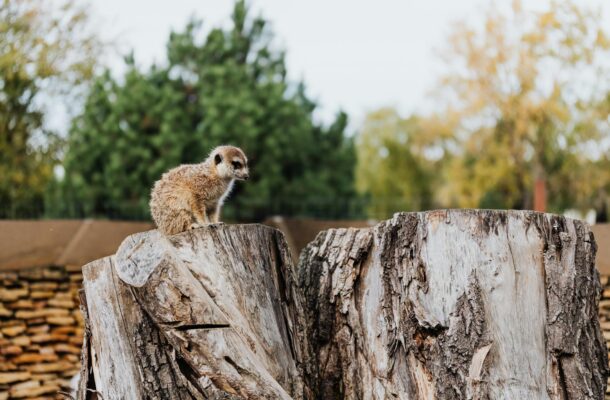Set aside the apple and the snake. Set aside the unforgiving God. The loss of Eden is a story about the consequences of monumental folly and needless greed. Having soiled paradise, we live now in a harsher, bleaker world.
In The End of Eden: Wild Nature in the Age of Climate Breakdown, the South African author and naturalist Adam Welz shows we are repeating those errors, sowing and reaping our despoilation. His book is a thoughtful, perceptive, empathetic and sorrowful account of the consequences of our increasing subversion of the natural world that gives us life.
By now, we are all aware of the devastating losses brought by increasingly frequent environmental catastrophes: the Black Summer bushfires, the floods, the coral bleaching, the droughts, the mass fish kills, the retreat of glaciers, the loss of polar ice, the days of unbearable heat.
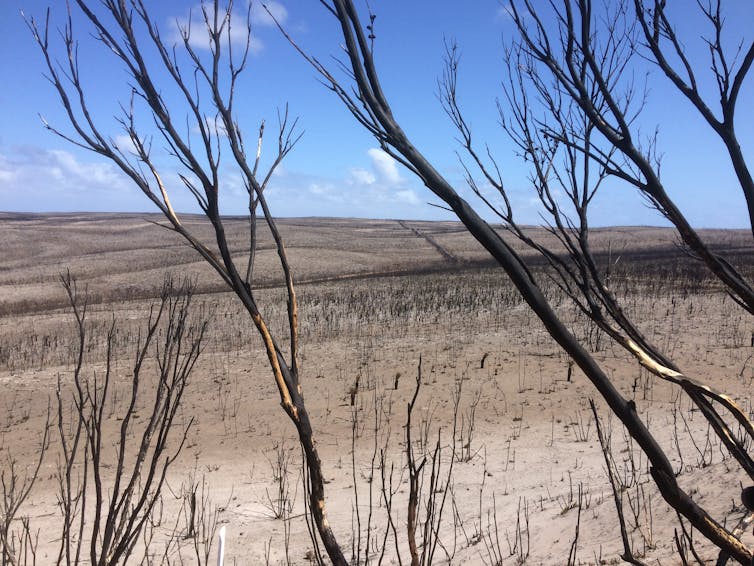
Kangaroo Island following the Black Summer wildfires. Such catastrophic events have devastating consequences, but there are many subtle and gradual effects.
Most people recognise that, as the creators of climate change, we are the responsible agents; we have put ourselves on a pathway that is rushing us towards destruction. Many of us have been directly affected; all of us will be indirectly affected.
In End of Eden, Welz describes some of the myriad losses of nature caused by such disasters. One of his examples is the impact of Hurricane Maria on the Puerto Rican parrots known as Iguacas. Following a long history of clearing of its habitat, its remaining wild population became restricted to a single national park in highland rainforest. By 2017, following decades of care by conservation agencies, this remnant population was at last seemingly secure, and the population had built to about 650 birds.
In vivid prose, Wenz describes what then happened when the hurricane tore through and destroyed this forest. Through radio-tracking, scientists were able to establish that maybe only one bird survived the onslaught. But after a few days lost in the devastated landscape, that single bird succumbed too.
In this case, happily, not all was lost for the Iguacas. Although the entire wild population was wiped out, some individuals in a captive breeding facility survived, providing a tenuous thread for the ongoing existence of the species.
It is a story with many lessons, but preparedness for inevitable disaster is an important message.
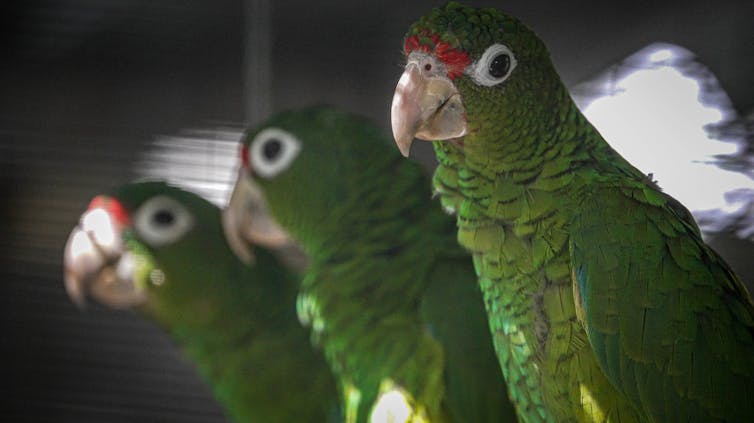
Puerto Rican Parrots.
Entangling impacts
End of Eden does much more than count the environmental toll of individual catastrophes. The effects of climate change are more subtle, more pervasive. Much of its effect is nuanced and gradational, and hence less obvious but more insidious.
Welz’s approach is to paint intricate portraits of plant and animal species, and of places. He gives us insights into how flora and fauna are woven into their ecological setting, then describes how that weave is unravelling.
Some of these accounts are heartbreaking. Millions of years of finely tuned evolution has perfectly adapted the biology of species to their environments. These adaptations are being rendered fragile and increasingly incapable of dealing with the rapid and unremitting changes we have wrought upon the world.
The cheetah is one such case. Exquisitely designed for speed, and hence so successful at hunting in the open plains, its habitat is being crowded out by increasing tree cover, a consequence of rising concentrations of greenhouse gases.
The cheetah’s specialised adaptation is now a failing, and the species is rapidly heading for extinction.
There are many comparable examples. Welz gives accounts of decline and loss of plants and animals, of the gathering emptiness. In some cases, we can decipher the cause, as scientists have – painstakingly, lovingly – learned to see the world from the perspective of a plant or animal, understand its weak points and define the chain of causality.
The Southern Yellow-billed Hornbill of the Kalahari is part of the fabric of that place, but populations are dwindling. Climate change is the root cause, as rising temperatures now often exceed the physiological tolerance of the males, leaving them unable to gather enough food to deliver to their dependent young and brooding females. They starve, and nesting now fails, year after year.
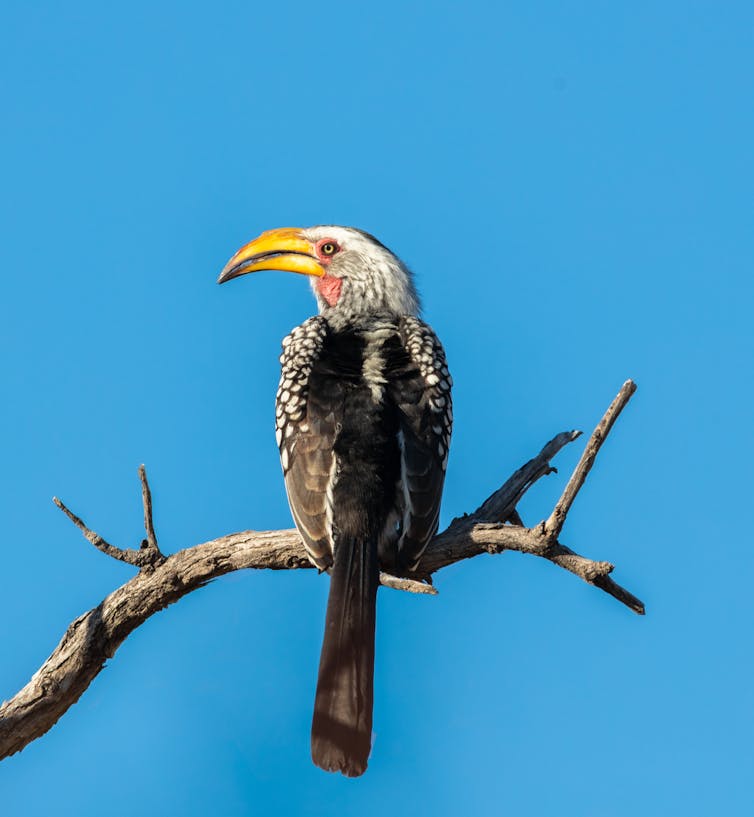
A Southern Yellow-billed Hornbill in Makgadikgadi Pans National Park in Botswana.
Even more intricately layered is the case of the Red Knot. For one subspecies of this shorebird, the mudflats of northwestern Africa are a key staging point along their migratory route, because within the mud there is a rich resource of small clams. In the 1980s, more than half a million birds congregated there.
But the population has now fallen by at least 80%. The problem lies thousands of kilometres away in the breeding grounds of northern Siberia, where warmer temperatures mean the snow covering melts earlier each year. The Red Knots now arrive too late to coincide their breeding with the pulse of insects that follows the melting snow.
Their young are now malnourished; breeding success has collapsed. Food limitation in infancy has also resulted in shrinkage of their bills. These increasingly shorter-billed birds cannot so readily access the clams hidden below the mud in their non-breeding area. Their bodies, formerly tuned to remarkable migrations, are failing them. Further decline seems inexorable.
There are many other examples of such losses in this book. Each plays out in a different area, at varying pace or magnitude. In each case, a species has its existence cruelled by one or more of the many manifestations of climate change.
These natural history narratives – of species struggling with new regimes of heat or fire or the chemical composition of their environments – illustrate the pervasiveness and multiplicity of climate change’s effects. Individually, they are saddening; collectively, they are devastating.
Change, chaos and causality
Welz writes that “climate change” is too gentle a phrase. He suggests “climate breakdown” is more apt, as it better conveys the likelihood there may be no recovery from this transformation and the multiple, complex and interactive processes that follow from our greenhouse gas emissions.
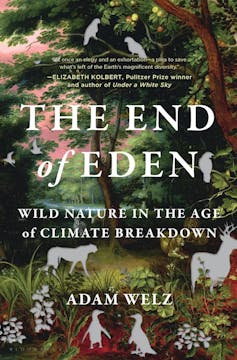
A characteristic and strength of this book is the counterpointing of its wildlife narratives with explanations of the workings of these causal factors. There are mechanistic descriptions of the processes of fire, thermoregulation, migration, wind, vision and evolution. Through Wenz’s accounts, we see the receding wildlife, but also understand the factors that have subverted their lives.
Much of the collapse of nature – the extinctions, the population crashes of previously abundant species, the losses which we barely perceive – can be attributed to our ongoing destruction of natural habitats, our resource use, the effects of invasive species, and other factors. Climate change is not the only concern.
But climate change compounds these effects. It pervades all natural systems. It has rapidly become the primary driver of much of this decline. And of course the causal factors are, ultimately, due to us.
The End of Eden is a harrowing, necessary book: it shows that we are now witnessing, and causing, the destruction of Eden. We are sentencing our descendants to a less bounteous, less wonderful world. Much of nature has been lost; much more will disappear.
Welz’s concluding chapter does, however, offer a little hope, a frail pathway to recovery. There are no new or startling solutions proposed. Indeed, the final section is cursory. Wenz’s argument is essentially that as we increasingly come to recognise what we are losing – the kinds of losses he documents so well in this book – our society, all of us, will eventually recognise the need to take the actions required to save our future.
We have a limited opportunity to prevent the fall.
This review of The End of Eden: Wild Nature in the Age of Climate Breakdown by Adam Welz was published by The Conversation.

